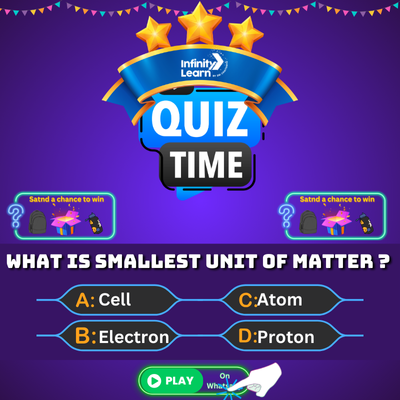Table of Contents
Bacillus thuringiensis, or BT, is a friendly bacteria that helps farmers. It kills harmful insects that eat and damage crops. BT is found in soil, water, and plants. It makes a special protein that is only dangerous to some insects but safe for humans and animals. Farmers and scientists use BT to protect plants in a natural and safe way.
What is BT Full Form ?
Bacillus thuringiensis, also called BT, is a helpful type of bacteria. It is found in places like soil, water, insect poop, insects, and even on plant leaves. It is shaped like a rod and can make spores to protect itself.
BT is very famous because it helps farmers. It works like a natural insect killer. It kills harmful insects, especially butterfly caterpillars that eat crops. When these caterpillars eat BT spores sprayed on plants, they die.
BT makes a special protein called BT toxin when it forms spores. This protein is poisonous to some insects. Scientists use the BT toxin gene in genetic engineering to make special crops that fight pests on their own. These are called BT crops, like BT cotton and BT corn.
When insect babies (larvae) eat the BT toxin, the toxin sticks to their stomach lining. This makes the insect’s stomach swell, break, and finally the insect dies. This way, crops stay safe without using harmful chemical sprays.
Do Check: List of all Important Full Forms
How Does BT-Toxin Work?
Bacillus thuringiensis (BT) is a useful bacteria that helps farmers protect their crops from harmful insects. Check the below details how BT-toxin works:
- BT is a natural bacteria used to kill harmful insects like caterpillars (e.g. tobacco budworm), beetles, flies, and mosquitoes.
- BT produces a special protein called BT-toxin. At first, this protein is inactive and is called a protoxin.
- When insect larvae (baby insects) eat the protoxin, it goes into their midgut (stomach).
- The midgut of these insects has an alkaline (basic) environment. This helps to dissolve the crystal form of the protoxin and turns it into an active toxin.
- The active BT-toxin finds and sticks to receptors on the wall of the insect’s gut. These receptors are made of sugar and fat (called glycoproteins and glycolipids).
- After sticking, the BT-toxin creates tiny holes (pores) in the insect’s stomach wall.
- Because of the holes, the insect’s stomach fluids leak into its blood, which changes the pH of the blood.
- This makes the insect stop eating, become paralyzed, and finally die.
Also Check: AFCAT Full Form
Mechanism of Action of BT-toxin
Bacillus thuringiensis, or BT, is a helpful type of bacteria. It is used to kill harmful insects that destroy crops. These insects include caterpillars like the tobacco budworm (lepidopterans), beetles (coleopterans), and some flies and mosquitoes (dipterans).
BT makes a special crystal protein called BT-toxin, but this protein is not harmful right away. It is made in a sleeping form called a protoxin. When insect babies (called larvae) eat this protoxin, it goes into their stomach (called the midgut). The insect’s midgut has alkaline liquid, which helps dissolve the crystal and turn the protoxin into an active toxin. Also, special enzymes in the stomach help cut the protein at both ends to fully activate it.
Once the BT-toxin becomes active, it sticks to special spots on the wall of the insect’s midgut. These spots are called receptors (made of sugar and fat). The BT-toxin makes tiny holes in the stomach wall. Because of these holes, the gut juice leaks into the blood, changing the blood’s pH level.
This causes the insect to stop eating, get paralyzed, and eventually die.
But if the insect does not have the right receptors, the BT-toxin cannot stick to the midgut wall. This means it doesn’t work. This happens in some insects like a few caterpillars and plant-chewing insects.
Sucking insects, spiders, and mites are also safe from BT-toxin. They do not eat the BT crystals, so the toxin doesn’t affect them. Also, some insects have neutral or slightly acidic stomachs. Since BT only works in an alkaline environment, these insects are not harmed.
In humans and animals, the stomach is acidic. Even if we swallow BT crystals, our stomach acid breaks them down quickly. Special juices in our stomach turn the toxin into harmless pieces within minutes. That’s why BT is safe for people and other animals. It only harms specific insect pests.
Must Read: Airbnb Full Form
Uses of Bacillus thuringiensis (BT)
Bacillus thuringiensis, or BT, is a useful type of bacteria. It is used to control pests and also to make genetically modified (GM) plants that are safe from harmful insects.
BT as a Biopesticide
BT is a biocontrol agent, which means it helps protect plants without using harmful chemicals. It is used mainly to kill caterpillars that damage crops, like the ones from butterflies and moths.
The first BT-based insect spray, called Sporine, was made in France. It was used to kill moths that spoil flour. Today, BT is sold in the market as dried spores. Farmers mix these spores with water and spray them on plants.
When insect babies (larvae) eat the spores, the BT-toxin inside becomes active in their stomach and kills them. But BT only kills targeted caterpillars and does not harm other insects or animals. So it’s safe for the environment.
BT sprays are often used on fruit trees and flowering plants like Brassica (cabbage family plants).
BT in Pest-Resistant Plants
BT is also used in genetic engineering to make insect-proof crops. Scientists take the BT-toxin gene and insert it into a plant using recombinant DNA technology. These plants are called genetically modified (GM) plants.
These GM plants can make BT-toxin on their own, so farmers don’t need to spray chemicals. These plants can protect themselves from insect attacks. Some examples of BT crops are:
- BT Cotton
- BT Corn
- BT Soybean
- BT Potato
Also Read: B.SC. Full Form
Cry Genes and Their Work
The BT-toxin is made by special genes called Cry genes. Different Cry genes kill different insects. So, the right Cry gene is selected based on the crop and the insect we want to control. For example:
- cryIAc and cryIIAb help protect cotton from bollworms
- cryIAb helps protect corn from corn borer insects
FAQs on BT Full Form
What is the full form of BT Bacillus?
The full form of BT Bacillus is Bacillus thuringiensis.
What is the full form of BT?
BT stands for Bacillus thuringiensis, a helpful insect-killing bacteria.
What is the full form of BT gene?
BT gene means the gene from Bacillus thuringiensis that makes insect-killing protein.
Is BT safe for humans?
Yes, BT is safe for humans and animals because it only harms some insects.








